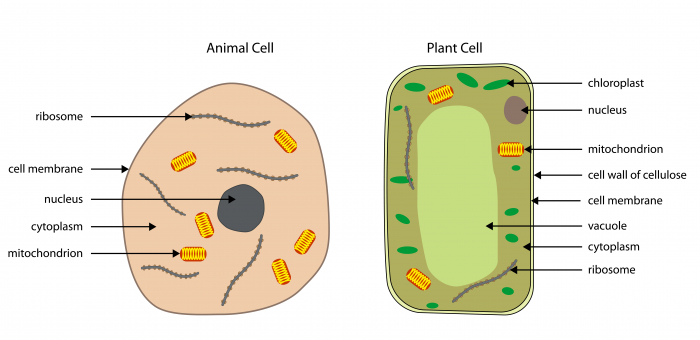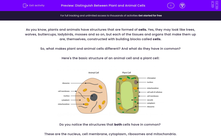As you know, plants and animals have structures that are formed of cells. Yes, they may look like trees, wolves, buttercups, ladybirds, mosses and so on, but each of the tissues and organs that make them up are, themselves, constructed with building blocks called cells.
So, what makes plant and animal cells different? And what do they have in common?
Here's the basic structure of an animal cell and a plant cell:

Do you notice the structures that both cells have in common?
These are the nucleus, cell membrane, cytoplasm, ribosomes and mitochondria.
Plant cells have additional structures that animal cells don't. Can you spot these?
These are the cell wall, vacuole and chloroplasts.
Each of the structures present in the plant and animal cells has an important function to perform. The nucleus contains the cell's genetic material and controls the cell's activity, the cell membrane controls what enters and leaves the cell, and the cytoplasm stores and extracts the cell's energy. The mitochondria are the structures where energy is released from respiration, and ribosomes help to make proteins for the cell.
In a plant cell, the cell wall is made of cellulose which helps to provide a rigid protective layer that supports the cell, the permanent vacuole contains cell sap (the cell sap helps with storage and support) and the chloroplasts are where photosynthesis occurs, making glucose for the plant.
In this activity, we're going to look at how plant and animal cells differ.









